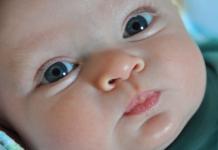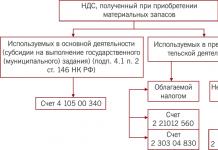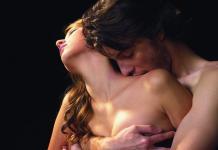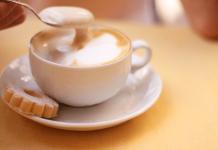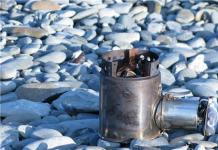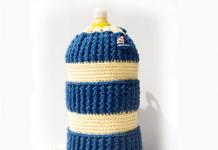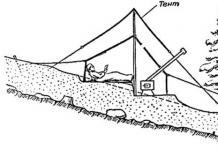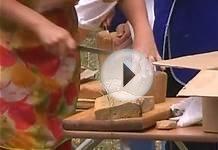poster presentation
Speech therapy corner of the speech group as part of the subject-developing environment.
Completed by: Kamalova E.V.,
educator
Kazan, 2014
The problem of speech in all its species diversity is relevant in preschool age. To date, there are many methods by which you can regulate the process of speech development in children. The most important condition for improving the speech activity of preschoolers is the creation of an emotionally favorable situation that contributes to the desire to actively participate in speech communication. At the same time, playful communication of children is of particular importance. Game communication is the necessary basis within which the formation and improvement of the child's speech activity takes place.
The development of a preschool child is greatly influenced by the space around him, the environment in which he is most of the time. In a preschool environment, such an environment is a group room.
Of particular importance is the problem of organizing a subject-developing environment when working in a preschool educational institution of a compensating type for children with OHP. The activities of children (independent and under the guidance of a teacher) that are not regulated by the framework of classes are the longest. In the course of this activity, educators organize individual and subgroup correction-oriented forms of interaction with children. The subject-developing environment makes it possible to enrich the experience of emotional and practical interaction of the child with peers and the teacher, to include all children in the group in active cognitive activity. The environment stimulates the development of independence and initiative. In it, children realize their abilities.
The composition of the subject-developing environment includes a correctional corner. It is a specially equipped space for playing alone or in small groups.
Its equipment includes racks located at different levels; mirror; game, didactic and visual material. With their help, teachers create conditions for correcting deviations in the development of children, stimulating speech activity and speech communication. The teachers of our preschool educational institution have improved the existing correctional corners in groups. When selecting didactic material, the following were taken into account:
- filling of the corner;
- variety of material;
- compliance with age;
- availability;
- consistency;
- design aesthetics;
- leading toy ("hostess" of the correction corner).
The thematic planning on lexical topics was taken as the basis for filling. The selection of gaming and didactic material is carried out on the basis of the recommendations of a speech therapist, which makes his interaction with teachers not formal, but very close and fruitful. The content is determined not by chance, but in strict accordance with the program, physiological and psychological and pedagogical features of the formation of speech with its general underdevelopment.
Didactic equipment corresponds to the structure of children's speech disorders, their individual and age characteristics. Experience shows that only with this approach is it possible to effectively correct the speech of preschoolers. With a random, formal selection of games, the volume of children's perception is overloaded and they do not master the lexical topic well.
The material contained in the correction corner has a multifunctional character. Games are selected in order of increasing complexity, aimed at correcting speech and extra-speech mental processes and functions that make up the psychological basis of speech. Game and didactic material is replaced or replenished in the correctional corner weekly, depending on the lexical topic (Appendix 1). At the same time, there is material on two topics: fixed and studied.
Didactic equipment should meet the needs of the current, immediate development of the child and his self-development. An object space that is empty in content tires, encourages idleness and aggression. At the same time, you should not overload the corner with equipment, as this makes the choice difficult. The more complex and varied the activity, the more necessary the speech, the greater the need for communication.
All material, within the framework of the lexical topic, selected by the group's specialists, corresponds to the age of the children. Reliance on the game, as the leading activity of preschoolers, provides teachers with a significant positive effect in corrective work. The game creates conditions for informal communication of the child with peers and adults, provides him with complete freedom of action. Therefore, game material is available to him. This has a positive effect on the development of speech and intellectual development in general.
The acquisition of game and didactic material in a correctional corner on lexical topics already implies a systematic approach to work. But its location can be included in the system. It is regulated by adults in accordance with sections of the program or corrective tasks to be solved. Children easily get used to this system. And the introduction of color markers on envelopes and drives containing games helps them in this. Small game material is placed in plastic, transparent containers with easily removable lids.
When creating a developing environment for a group, it is very important that the environment surrounding children be comfortable and aesthetic. Beauty shapes the child. Therefore, we pay great attention to the aesthetics of the correction corner. Its design should be attractive to children and arouse in them the desire for independent activity. At the same time, it is necessary to teach children to maintain order in the corner and to cultivate a careful attitude towards toys.
It is advisable to place the correction corner in a well-lit place and somewhat remote from the playing area. This will create more comfortable conditions for exercising in it. Access to the corner should be convenient so that the children themselves can approach it and study. With sufficient lighting. The proximity of the play area will interfere with classes in the correctional corner and distract the child from completing tasks.
A special place in the objective world of the child is occupied by a toy. She is a friend, a partner in the game, an interlocutor. Puppet therapy allows solving such important correctional tasks as overcoming uncertainty, shyness, achieving emotional stability and self-regulation. Therefore, it was decided to make the toy the key character, the mistress of the corner. This toy is multifunctional. It must be an animated character. His ability to move (with the help of an adult or a child), ask or answer questions, make riddles, come up with interesting stories, invite friends over, present unexpected surprises arouses a keen interest in children, encourages speech activity. The toy can have a bright, movable tongue, with the help of which it is easy to explain the articulation gymnastics exercises to the kids. The clothes of the toy contain various elements for the development of fine motor skills of the hands (hooks, Velcro, buttons, laces, buttons, buckles, clips, zippers, ribbons, etc.). The fabric from which the clothes are sewn can be different, which allows children to easily learn the names of materials, as well as characterize their properties (using tactile sensations). The color scheme helps to remember the main and tint colors. If the character has movable arms or paws, then with their help, children quickly master the skills of orientation in the body scheme.
As our experience shows, the recommendations for the content of the correctional corner developed by speech therapists allowed teachers to create additional conditions for creating an enriched subject-developing and supporting speech environment in the group. We had a consultation on the organization of correctional corners and an exhibition-competition, in which the entire teaching staff took part. In this work, the creative abilities of teachers were fully manifested. And summing up the results on a competitive basis revealed a high level of their skill.
Thus, the use of a correctional corner allows you to expand the environment in the group, create in children emotional responsiveness and a desire to participate in verbal communication with adults and independently, during the game, easily and naturally develop and improve their speech skills.
Bibliography:
1. T.B. Filicheva, G.V. Chirkin. Preparation for school of children with general underdevelopment of speech in a special kindergarten (in two parts), M.; 1993.
2. E.D. Khudenko, T.S. Melnikova, S.N. Shakhovskaya. How to teach a child to think and speak. M.; SPF "Uniserv", 1993.
3. S. Vasilyeva, N. Sokolova. Speech therapy games for preschoolers. M.; 1999.
4. M.F. Fomichev. Teaching children the correct pronunciation. M.; 1981.
5. V.V. Kovalenko, S.V. Kovalenko. Articulatory and finger
gymnastics. M.; 2004.
6. L.S. Savina. Finger gymnastics for the development of speech of preschoolers. M.; 1999.
7. N.V. Miklyaeva, O.A. Polozov. Phonetic and logopedic rhythm in the preschool educational institution. M.; 2004.
8. S.A. Mironova The development of speech of preschoolers in speech therapy classes. M.; 1991.
9. Varentsova N.S., Kolesnikova E.V. The development of phonemic hearing in preschoolers. M.; 1995.
10. A.V. Krapukhin, S.N. Shakhovskaya, O.A. Ishimova. Learn to think and speak. M.; 1990.
11. L.N. Arefieva. Lexical topics for the development of speech of children 4-8 years old. M.; Sphere, 2005.
12. N.V. Novotortsev. Preparing a child for school. First steps in learning to read.
13. O.A. Belorybkin. Speech and communication. Yaroslavl, 1998.
Application No. 1
Fullness of the correctional corner in the senior group.
Sections | Games |
fine motor skills | Mosaic Lacing Draw by cells |
Breath | Game "Butterflies have flown" Game "Blow on a bird" |
phonemic hearing | Noisy boxes game Game "Telegram" |
Sound analysis and synthesis (diploma) | Game "Chain of words" The game "Voiced - deaf" Game "Schemes and words" |
Sound pronunciation | The game "Cheerful tongue" (articulation gymnastics) Lotto mosaic Tongue Twisters |
Vocabulary | Picture dictionary (subject pictures for sounds С, СЬ, З, ЗБ, Ц, Ш, Ж, Х, Щ, L, L, R, Rb) "Themed Lotto" Game "I know all professions" Game "Family" The game "Name it in one word" Game "Tell me about your city" |
Syllabic structure | Game "Long and short words" |
The grammatical structure of speech | The game "Call it affectionately" Game "One - many" Lotto "Little words" |
Connected speech | The game "What's first, what's next" Game "Think up a continuation of the story" The game "What did the artist mix up?" The game "Sound, light, water" |
Higher mental functions | Spot the difference game (attention) Game "Find out what it is?" (perception) The game "Whose silhouette?" Game "Objects and contours" Game "Confusion" Game "Wings, Paws and Tails" The game "The Fourth Extra" |
Additionally:
1. File cabinets:
- breathing exercises;
- finger games;
- exercises for the development of phonemic perception;
- riddles.
2. Svetlova I. Home speech therapist. - M., 2002.
Margarita Andreeva
The only way to get to the top of a ladder is to climb rung by rung, one at a time. And in the process of this rise, you will suddenly discover in yourself all the necessary qualities, skills and abilities necessary for achieving success, which you, it seems, never possessed.
Margaret Thatcher

Greetings, dear colleagues!
It is with great pleasure that I present my work speech therapist's office at MBDOU d / s"Berry" With. Aleksandrovsky, Tomsk region. speech therapist I'm only in my second year. In my work I use innovative technologies:
I am working on the development of auditory attention;
Speech, phonemic hearing;
Physiological and speech breathing;
Formation of the correct sound pronunciation, automation and differentiation of various sounds;
The development of the grammatical structure of speech;
The development of coherent speech (dialogues, retellings, stories).
I pay special attention to the formation of phonetic and phonemic perception.
I introduce children to sounds, develop sound skills syllabic analysis, synthesis.
Working on preventing dysgraphia and dyslexia.
This is what I managed to do with my own hands, the hands of my children and parents during this period.
Welcome!

At the front door cabinet plate« Speech therapist» , work schedule speech therapy
cabinet and« The speech therapist's secret» :
How to speak clearly and understandably -
Qualified master - SPEECH THERAPIST.
He teaches verbal communication,
Grammar and vocabulary are his subject.
Breathing, phonation, articulation
With knowledge of the matter will teach you SPEECH THERAPIST.
He is a teacher, teacher and psychologist,
He is a philologist, and he is a linguist,
He is a teacher, doctor, defectologist,
Actor, speaker SPEECH THERAPIST.
Researcher, methodologist, innovator,
He is a diagnostician, proofreader and expert,
Both consultant and observer
Versatile specialist SPEECH THERAPIST.
Speech therapist's office.
Card files of games and exercises, as well as other material for classes.


1. Workplace speech therapist.
2. Under the shelf is located "Clue speech therapist» : Schedule of individual work with children; Schedule speech therapist(general); Reminders "vowel sounds and letters", "Classification of consonant sounds of speech", "The structure of the dental system".

3. On the same wall are wall mirrors and "Spider line"(a place to fix the demonstration material for repetition with children, as well as tips for speech therapist for classes).
4. To the left is a zone for the development of breathing "Carousel" and hand motility "Colorful braids".



5. There is a small "Shop for the development of fingers" where the child in free activity can take the following allowances and games:









5.2. Didactic games, insert games, lacing.
5.3. massage balls (Su-jok therapy).
5.4. Collection of shells, animals of the seas and oceans.
5.5. Fruits and vegetables.
5.6. A game "Guess what's in the egg?"
5.8. breezes; "Repeater Snake"; "Talking Frog".
5.9. Dry pool for hands from kinder eggs.
6. « speech therapy assistants» - massage balls (soft and hard to the touch).


7. And on the shelf are our favorites « speech therapy assistants» (in special jars): pebbles, shells, beads, colored strings, balloons, whistles, small toys from kinder surprises, magnets, magnetic letters of different colors for a magnetic board, crumbs, buttons, puzzles and much more.


9. In the closet are « speech therapy keys» - probes and probe substitutes; oils for aromatherapy; spatulas; alcohol; cotton buds; cotton pads; napkins; tubules; cotton wool
10. On the closet are children's toys, containers for the development of breathing game "Snowfall".


11, 12. There are teaching materials in the closet, "Piggy bank of methodological material speech therapist» , as well as literature and other teaching aids.


13. In the office has a computer(I actively use modern ICT tools in my work with children).
14. Next to the study area there is a place for individual speech therapy work with children(equipped with various games, exercises).
15. Study area speech therapy room: board, magnetic board, a place for attaching visibility.
16. Handout for literacy classes for preparatory speech therapy group(chips of a card for drawing up a sentence diagram, counting sticks, chips for stress and games "Traffic Lights", colored woolen threads for laying out letters on velvet paper).

speech therapy corner for parents, located in the hallway of the group.
Olga Kushnarenko
This presentation was presented at the municipal review - competition » . Participated in the competition groups compensatory orientation for children with speech disorders. According to the results of the competition, our group took third place. The slides show speech zone, didactic games and visual aids for use by educators in the work on consolidating speech skills as well as for independent activities of children. Here you can see: a file of articulation exercises, games for the formation of air jets, the development of fine motor skills, sound syllabic analysis and synthesis, for automation and differentiation of sounds, finger theatres, musical and noise instruments, media library. Everything is within reach for children. The group was opened 01.09.2015.



Related publications:
It can be difficult for educators working in speech therapy groups to remember the automated sounds of each child. There are many children, but the sounds are.
"Speech Cube" (didactic game for children of speech therapy preparatory group) Program tasks: - develop the ability to perform sound.
Synopsis of entertainment in the senior group "Speech KVN" Purpose: To create a positive emotional mood for all participants, to reveal the role of a fairy tale in social, moral, creative and speech development.
Synopsis in the preparatory speech group "Tales - Helpers""Fairy tales - helpers" Objectives: to exercise in matching adjectives with nouns in gender, number, case. Fix the correct pronunciation.
In the middle group, the Rechetsvetik center was organized, in which didactic games were selected: Sound culture of speech Development of the phonemic.
Organization of full-fledged speech activity of children of a speech therapy group through the implementation of non-traditional forms Application to the experience "Organization of full-fledged speech activity of children of a speech therapy group through the implementation of non-traditional forms.
Project "Speech center as a means of developing children's independent speech activity" The more complex and diverse the activity, the more necessary speech, the greater the need for communication. The most important condition for improving speech.
The problem of speech in all its species diversity is relevant in preschool age. To date, there are many methods by which you can regulate the process of speech development in children. The most important condition for improving the speech activity of preschoolers is the creation of an emotionally favorable situation that contributes to the desire to actively participate in speech communication. At the same time, playful communication of children is of particular importance. Game communication is the necessary basis within which the formation and improvement of the child's speech activity takes place.
Download:
Preview:
Speech therapy corner of the speech group as part of the subject-developing environment
The problem of speech in all its species diversity is relevant in preschool age. To date, there are many methods by which you can regulate the process of speech development in children. The most important condition for improving the speech activity of preschoolers is the creation of an emotionally favorable situation that contributes to the desire to actively participate in speech communication. At the same time, playful communication of children is of particular importance. Game communication is the necessary basis within which the formation and improvement of the child's speech activity takes place.
The development of a preschool child is greatly influenced by the space around him, the environment in which he is most of the time. In a preschool environment, such an environment is a group room. The problem of organizing a subject-developing environment acquires special significance when working in speech therapy groups. The activity of children (under the guidance of a teacher or independent) that is not regulated by the framework of classes is the longest. In the course of this activity, educators organize individual and subgroup correction-oriented forms of interaction with children. The subject-developing environment makes it possible to enrich the experience of emotional and practical interaction of the child with peers and the teacher, to include all children in the group in active cognitive activity. The environment stimulates the development of cognition, initiative. In it, children realize their abilities.
The composition of the subject-developing environment includes a correctional corner in the group. It is a specially equipped space for playing alone or in small groups. Its equipment includes shelving, a mirror, game, didactic and visual material. With their help, educators create conditions for correcting deviations in the development of children, stimulating speech activity and speech communication. The content of the correctional corner is based on thematic planning on lexical topics. The selection of gaming and didactic material is carried out on the basis of the recommendations of a speech therapist, which makes interaction with educators not formal, but very close and fruitful. The content is determined not by chance, but in strict accordance with the program, physiological, psychological and pedagogical features of speech formation.
Didactic equipment should correspond to the structure of children's speech disorders, their individual and age characteristics. Only with this approach is it possible to effectively correct the speech of preschoolers. With a random, formal selection of games, the volume of children's perception is overloaded and learning ability is sharply reduced.
Game and didactic material is replaced or replenished in the correctional corner weekly, depending on the lexical topic.
It is necessary to diversify the activities of children in the correctional corner. Didactic equipment should meet the needs of the current, immediate development of the child and his self-development. An object space that is empty in content tires, encourages idleness and aggression. At the same time, you should not overload the corner with equipment, because. it makes the choice difficult.
The material contained in the correction corner has a multifunctional character. Games should be selected in order of increasing complexity, aimed at the development and correction of speech, the development of phonemic perception, pronunciation skills, auditory attention, verbal memory, articulatory motor skills, games that provide compensation for higher mental functions and make up the psychological basis of speech, maximally verbalized.
The more complex and diverse the activity, the more necessary speech, the greater the need for communication. All material must be age appropriate. Reliance on the game, as the leading activity of preschoolers, provides a significant positive effect in corrective work. The game creates conditions for informal communication of the child with peers and adults, provides him with complete freedom of action. Therefore, game material should be accessible to him. This has a positive effect on the development of speech and intellectual development in general. Acquisition of game and didactic material in a correctional corner on lexical topics suggests a systematic approach to work. It is regulated by educators in accordance with sections of the program or corrective tasks to be solved.
When creating a developing environment for a group, it is very important that the environment surrounding children be comfortable and aesthetic. Beauty shapes the child. Therefore, it is necessary to pay great attention to the aesthetics of the correction corner. Its design should be attractive to children and arouse in them the desire for independent activity. At the same time, it is necessary to teach children to maintain order in the corner and to cultivate a careful attitude towards toys.
It is advisable to place the correction corner in a well-lit place and somewhat remote from the playing area. This will create more comfortable conditions for exercising in it. Access to the corner should be convenient so that the children themselves can approach it and study. In case of insufficient lighting, it is necessary to provide additional. The proximity of the play area will interfere with classes in the corner and distract the child from completing tasks.
The filling of the correction corner should be carried out in sections:
- articulation gymnastics in pictures: (pictures for articulation exercises, sets of exercises for articulation in pictures-tables). This can be done independently, and the description can be taken from the methodological literature. For example: T.A. Kulikovskaya "Articulation gymnastics in verses and pictures", "Articulation gymnastics in counting rhymes", V.V. Konovalenko, S.V. Konovalenko "Articulation, finger gymnastics and breathing-voice exercises";
- fine motor skills : spinning tops, dry pool, lacing, mosaic, puzzles, stencils for hatching, internal and external strokes, pencils, etc.;
- breathing : turntables, pipes, balloons for inflation, bubbles, air jet games, etc.;
– higher mental functions: cut pictures, dominoes, “The fourth extra”, “Color and shape”, “Learn by contour”, etc. It is advisable to discuss the content of this section with a psychologist;
– phonemic awareness: games for the differentiation of sounds - for example, Games with paired cards by Z.T. Bobyleva;
– sound pronunciation: albums on the automation of sounds by V.V. Konovalenko, S.V. Konovalenko; game exercises L.A. Komarova; games for the automation of sounds: “Speech therapy lotto”, “Speech therapy domino”, “Steam locomotive”, “Pick and name”, etc.);
- vocabulary : pictures reflecting the studied lexical topic (plot and subject); educational puzzles, games: loto, “Pick up a couple”, “Who will name more”, “Part and whole”, etc.;
– grammatical structure of speech: EM games Karpova, E.V. Solovieva, V.V. Konovalenko, S.V. Konovalenko, the game “Whose tail?”, “One is a lot”, “Call it affectionately”, “What is not?” and etc.;
- connected speech : plot pictures, “Guess by the description”, “When does it happen?”, “We play in the profession”, etc .;
- diploma : schemes of words, sentences, games: “Pick a word for a scheme”, “Make a sentence according to a scheme”, “Add a word”, crossword puzzles, rebuses, etc.
An interesting material for a correctional corner can be the game guide "Speech Cube", developed at the MDOU "Child Development Center - Kindergarten No. 2". More information about working with "Speech Cubes" can be found in the magazine "Reference book of the senior preschool teacher" No. 1 January 2010.
The manual is cubes of different sizes, made of light materials (cardboard, plastic, foam rubber, fabric, polystyrene). On each face of the cube there are transparent pockets intended for interchangeable speech material. This material is used when performing articulation exercises, for the development of general and fine motor skills, lexical and grammatical structure and coherent speech in children. It is changed by a speech therapist teacher and educators as children learn different topics.
On their own, children play with cubes in their free time, consolidating the material worked out in the classroom with a speech therapist teacher. While playing, preschoolers throw a cube and perform the task that fell on the face of the cube.
Each cube has its own name, reflecting the purpose of its (cube) use.
A special place in the objective world of the child is occupied by a toy. She is a friend, a partner in the world of games, an interlocutor. Puppet therapy allows solving such important correctional tasks as overcoming uncertainty, shyness, achieving emotional stability and self-regulation. Therefore, the key character of the correctional corner can be made a toy. Such a toy should be multifunctional. This is definitely an animated character. His ability to move (with the help of an adult or a child), ask or answer questions, make riddles, come up with interesting stories, invite friends over, present unexpected surprises arouses a keen interest in children, encourages speech activity. The toy may have a bright movable tongue, with which it is easy to explain articulation exercises to children. Her clothes may contain various elements for the development of fine motor skills of hands (buttons, hooks, buttons, laces, Velcro, buckles, zippers, clips, etc.). The fabric from which the clothes are sewn can be different, which allows children to easily learn the names of materials, as well as characterize their properties (using tactile sensations). The color scheme helps to remember the primary colors. If the character has movable arms or paws, then with their help, children quickly master the orientation in the body scheme.
The teacher conducts a lesson in a speech therapy corner in the afternoon on the instructions of a speech therapist. With children, the articulation of sounds, automation in words in subject pictures are worked out. Sentences and short stories are made with these words.
With a group of children, a game can be organized to differentiate delivered sounds or expand vocabulary.
Children themselves approach the speech therapy corner: they do gymnastics for the tongue, blow games to develop an air stream, take strokes, lacing, mosaics, puzzles, name pictures in sound albums, play a speech therapist.
One of the main conditions for the quality of corrective speech impact is the sincere interest of the teacher in its results, the desire to help the child, the constant readiness to provide him with the necessary assistance and support in cases of difficulty. If the adult wants it, the child will want it too.
Thus, the use of a correctional corner allows you to expand the speech environment in the group, create in children emotional responsiveness and a desire to participate in speech communication with adults and independently, during the game, easily and naturally develop and improve their speech skills.
...If we can teach a child to feel
beauty, marvel at wondrous creations
human hands, the beauty of nature, then
let's raise a man with a high culture
feelings, but to reveal to children the beauty of the world
possible through creativity, which
brings joy ... (V. A. Sukhomlinsky)
Our group is called "Pinocchio". Compensatory speech therapy group for children with severe speech disorders. We tried to create all the conditions for our children so that they feel comfortable throughout the day. When opening the group and designing it, we took into account all the standards of the program.
Let's start, dear colleagues, our tour from the entrance to the group. Welcome! The dressing room is decorated according to the name of the group. We dressed our fairy-tale hero in an Olympic uniform. After all, the Sochi 2014 Olympics are coming soon. We are also preparing for it with the children (we have conversations, look at illustrations, study sports).

Our stands are also made according to the fairy tale "Pinocchio" (information stand and menu).

When we have holidays, open days, we make sure to decorate our locker room on the theme of holidays, lexical topics, events.

To the left of our fairy-tale hero is our sports corner.
Well, let's go further? Before entering the group, we have a mood corner. Modern life requires from a person qualities that allow a creative and productive approach to any type of activity. This is explained by the fact that preschool age is sensitive for the development of figurative thinking, imagination, mental processes that form the basis of activity. We need to create conditions for psychomotor development in the speech therapy group. Therefore, almost all corners of the group are associated with the work of fine motor skills. Children find the appropriate symbol of their mood at the moment and hang it on the stem of a bright dandelion (hook). We did not install the mirror by chance, because sometimes children just doing facial exercises, show their emotions, can change the symbol (there is a file of exercises in the group).

Right at the entrance, we have developed a corner "Hello, I've come!" or in another way we call it the "Zodiac circle". Photos of children are attached to the rays of the sun, what zodiac sign they are. The kids love it. They learned the entire zodiac circle. They know the signs of their relatives and friends, even each other. Coming to the kindergarten in the morning, the children turn the photo upside down, and leaving in the evening, respectively, they do everything back. It is possible to combine the correction of existing disorders in children with the improvement of motor skills and abilities using non-traditional methods and techniques.

We go further and what do we see? Wow! Pinocchio with children got to the field of miracles. What miracles have happened to our children today? We know, we know, our Anya learned to say the sound "P" so she got another gold coin. Both children and parents can always follow the progress of their children. Due to the fact that every year there is an increase in the number of children with various disorders, including speech disorders, we must focus on the current, immediate and future development of children, as well as on the development of their individual abilities.

Immediately on the opposite side is a large stand for creative works "City of Masters". The exhibitions at the stand change very often, because in addition to the GCD for fine arts, we have a group work called “Skillful Hands”. There is also a shelf for plasticine work and other do-it-yourself work. The principles of our work are the development of children's free activity, in the process of which self-realization, self-expression, self-affirmation of the child's personality, his individual capabilities take place.

On the opposite side of the creative stand, a miracle grows - a tree. We use it to familiarize ourselves with the environment. The seasons change according to the calendar: leaves, birds on the feeder, snow, insects, buds and much more, depending on the season and changes in nature. The children themselves help us to organize our work. Watching the activities of children during the day, we ask ourselves the question, what else can be done in our work so that our pupils can reveal their capabilities?
 |
 |
 |
We use a tree for environmental education. Rules of conduct in nature.
Some art topics may also fit our wonderful tree, such as "Bullfinches like apples." Of particular importance for the development of the personality of a preschooler is the assimilation of ideas about the relationship between nature and man. Mastering the ways of practical interaction with the environment ensures the formation of the worldview of the child, his personal growth.
Oh look! What a caterpillar. What kind of pockets does she have on her abdomen? These pockets are for moms, dads and kids. And in the pockets there are many different riddles, poems, signs about the seasons. We memorize them together with moms and dads at home. Parents themselves choose what to teach today. We use both previously developed methods and our own author's developments, including non-traditional methods, as the basis of our activities. Thus, in our group all conditions for the comprehensive development of children are created.

We ask you to go further, dear guests! We have a fun corner of the attendants. Do you know why it's funny? Yes, because our cook always calls the attendants to set the tables with a cheerful song. Educators include it on time. The attendants hear the song and run to watch. Like this. Information in the corner often changes: rules of conduct at the table, table setting, national dishes and more.

A little further away is our children's library. Yes, you heard right, the library. If children want to take a book home, they sign up on their library cards. Just like in a real library. There is a library card for every child, and even for adults. The library has: a card file of books (list of references); first aid kit for books; bookmarks that the children made themselves; illuminated magnifier; books - babies for their own authorship (design); a table lamp for individual reading or evening reading (we have an evening tradition in the group, reading fairy tales by candlelight. A magic chest containing objects with which we will find out how the book appeared, what used to be written on? Children can at any time themselves try to write: on clay, papyrus, bark, stone, leather... We arrange various exhibitions dedicated to writers and poets.

We have a creative zone next to the library. Here you can find everything, "What your heart desires." We love to create. We do a lot with the help of non-traditional techniques. Our doll Alyonushka changes her outfits, or rather national costumes. Products of decorative and applied arts are changing.
 |
 |
To the right of the creativity zone we have a fine motor zone. As researchers of children's speech note, hand movements have always been closely associated with speech and contributed to its development. In the process of manipulating materials, there is a natural massage of biologically active points located on the palms and fingers, which has a positive effect on the general well-being of the child. That's why our children use these trays with different objects for finger and hand development in their free time. There are various massagers, sujo-ki, tops, tablets for tactile sensations, sorting cereals, stringing beads, working with tweezers, a pipette and much more. In order not to lose interest in children, benefits are changed once a week.

A significant role in this direction is played by the search and cognitive activity of preschoolers, which takes place in the form of experimental actions. In their process, children transform objects in order to reveal their hidden essential connections with natural phenomena.
And we have something to watch. Now you will see for yourself. In order to improve the state of speech function and reduce the number of speech disorders, to develop fine motor skills of the hands, it is necessary to draw up a system of corrective work with children. For such children, the process of actions with objects throughout the day is often important. In order to form in children the initial concepts of the main calendar units of time and give the correct interpretation of these measures, we developed a calendar of nature for children with severe speech disorders.

Children determine the season, month with the help of an arrow. On the calendar, children determine the state of today's weather and move the arrow to the appropriate symbol. With the definition of the weather, children change clothes on dolls - templates also located on the calendar. All templates are easy to remove and attach again.
At the bottom of the calendar are tree templates. In our case, it is birch. The tree can be traced in all months throughout the whole season (without leaves in winter, in spring it begins to turn green gradually, in summer with green leaves, in autumn with yellow ones). Then we determine which week this month is in the account. To do this, buttons are attached under each tree according to the number of weeks in this month.
On each button hangs a week (strings) on which we put on a bead (day of the week). The beads are also of the corresponding color: Winter is white, spring is pale green, summer is bright green, autumn is yellow. Every day, the beads are added and we count which day in a row, for example, Wednesday, if there are three beads? (Third). Days off are marked with red beads. At the end of each week, we count the beads (how many days in a week). The proposed manual served as a model of the calendar year, since it clearly reflected the relationship of all measures of calendar time. The children themselves took off the weeks of the calendar and added up from the weeks - a month.
From months gradually and consistently formed a year. Children at any time could come up to determine how many days have passed since the beginning of the week, how many weeks have passed since the beginning of the month, how many months have passed since the beginning of the year, and by empty weeks - how much is left before its end. By performing all these actions, children gradually comprehend and become aware of complex quantitative relationships between individual measures of time. Working with the calendar and the calendar year model makes learning much easier. Children develop clear ideas about the length of the year and the standards for its measurement.

Look dear colleagues. We use a hoop for hanging pictures, illustrations on lexical topics. We also use it for speech breathing exercises: snowflakes, butterflies, flowers and more. To ensure a truly comprehensive development of the child, it is necessary to maintain the unity of the subject-developing environment and meaningful communication between adults and children.
We live in the far north. And we always lack warmth, sun, some greenery, vitamins. Children almost 9 months see snow. During the year we implement mini-projects. Children are invited to prepare a mini-report. Projects are developed and implemented taking into account the program being implemented. These projects well fill the gaps in educational work with children. The children and I worked on the Little Gardeners project. With the phenomena of the surrounding world, in particular animate and inanimate nature, the child encounters very early and seeks to know them.

The defense of the project consists in the transfer of the collected information on the topic by the child himself, using photographs, drawings, crossword puzzles, riddles - prepared together with the parents on this topic. The child, defending his project, learns to speak to the audience of the group, answer the questions of those present. Evelina defends the My Motherland project.

Well, it's time to look into the quietest place. This is a children's bedroom. Here we wake up, do exercises and walk along the corrective paths that we sewed ourselves. My children and I call it the “Health Path”. How great it is to do everything by yourself, with your own hands, with parents and children. Caring for the health of the younger generation is one of the priorities of the state policy in the field of education.

And this is our pride. Our theater is the best. We have children's performances, finger, table and other theaters. Behind the curtain we have a dressing room with a mirror, a dressing room and various types of theaters. Conditions are created for the predominance of positive emotions in the organization of theatrical activities of children.

We even show the REMP theater (the poem “Somehow the cube went into the forest, he found a cylinder there!”). So the children better remembered the geometric bodies. After all, we do not have classes now, but there is direct educational activity. The purpose of this theatrical performance was to generalize, systematize, clarify ideas about geometric shapes and geometric bodies.

Well, it remains to see our washroom. Fish swim around algae. Maps-schemes (algorithms) are posted everywhere. And in the group, the locker room, the bedroom.

Today, education is needed, which becomes a face to the child, to his characteristics and abilities, provides an opportunity to prove himself where he is successful. This is especially important when raising children with disabilities. Given the importance of this problem, the ongoing work does not lose its relevance. The novelty of this work lies in the understanding of the priority of correctional work on the development of fine motor skills of the hands using non-traditional methods and techniques as an effective means of developing the personality of a child with severe speech disorders.
List of used literature:
1. Program for the development of a preschool educational institution (from the experience of MADOU)
2.N.E. Veraksa "Project activities of preschoolers"
3.L.D. Postoeva L.A. Martynenko "Play, listen, learn!"
4.L.L. Timofeeva "Project method in kindergarten"
5.M.E. Khilko Developmental psychology
6.E.A. Lifits "Development of speech, movement and fine motor skills"
7. Own developments (from work experience)
Certificate of publication in the media Series A 0002223- 0002224 ShPI 62502666132205 date of dispatch 16.11.2013
We invite teachers of preschool education in the Tyumen region, YaNAO and Khanty-Mansi Autonomous Okrug-Yugra to publish their methodological material:
- Pedagogical experience, author's programs, teaching aids, presentations for classes, electronic games;
- Personally developed notes and scenarios of educational activities, projects, master classes (including video), forms of work with families and teachers.
Why is it profitable to publish with us?





